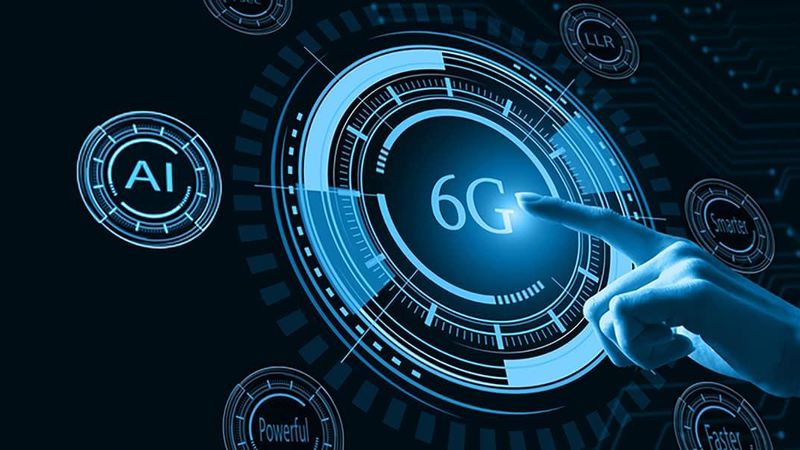Communications network management applying AI & ML: Technological Trends Leading to Beyond 5G & 6G
Beyond 5G (5th generation and later mobile communications system: hereinafter “B5G”) / 6G (6th generation mobile communications system) is expected to be applied and spread in popularity as a new form of information communications infrastructure from the 2030s.
This article was first published on
article.murata.comProspects of Beyond 5G/6G and technology to achieve it

Beyond 5G (5th generation and later mobile communications system: hereinafter “B5G”) / 6G (6th generation mobile communications system) is expected to be applied and spread in popularity as a new form of information communications infrastructure from the 2030s. In addition to enhancing 5G (5th generation mobile communications system) features such as ultra-high speed, large capacity, low latency, and simultaneous multiple connections, B5G/6G is expected to have ultralow power consumption as well as features such as expandability of covered communication areas (coverage), network autonomy, ultra safety, and reliability.
On this website, as technologies applied to achieve the characteristics of B5G/6G, we have covered future technology trends such as high-speed communication and sensing through terahertz waves (and subterahertz waves), as well as significant coverage expansions through Non-Terrestrial Networks (NTN).
This article explains the prospects of power consumption reduction in communications equipment as well as communications resource optimization in multiple simultaneous connections through autonomy that apply AI (Artificial Intelligence) and ML (Machine Learning), which are expected to further enhance 5G.
AI/ML in B5G/6G as well as their importance
AI (Artificial Intelligence) and ML (Machine Learning), which are technologies that are crucial to 5G and next-generation mobile communications systems, are both computer science terms. Let’s review what they are about and touch on their differences.
Overview and differences of AI and ML
AI refers to the comprehensive ability that enables computers and machines to imitate human actions.
On the other hand, ML is an application of AI, and refers to the education process applied to systems that enable them to compare and classify massive amounts of data (big data) using a neural network*1. Repeating this process eliminates the explicit use of programs, enabling computers and machines to learn to provide predictions as well as perform automatic processing.
*1 A neural network is a mathematical model that was modeled based on the workings of the human brain and applied in a simplified format on a computer. It is comprised of input and output layers as well as an intermediate layer in between.
The importance of AI/ML in B5G/6G

Considering the advanced features expected from B5G/6G such as ultra-high speed, large capacity, low latency, simultaneous multiple connections, ultralow power consumption as well as autonomous predictions and control which were mentioned at the beginning of this article, it will be difficult to use them with fixed network settings or at times having to optimize and control the network manually. Additionally, issues such as increased power consumption and environmental load that occur due to communications infrastructure enhancement cannot be overlooked.
As AI/ML are technologies required to solve these kinds of issues, research has been performed to control and optimize communications network management in anticipation of the enhancement of 5G, which began formally being applied for commercial use around 2020, as well as the age of B5G/6G, which is assumed to come around 2030. Furthermore, while 5G applies AI/ML technologies simply as additional features, B5G/6G is an AI-native mobile communications system that assumes the use of AI/ML.
The introduction objective and utilization prospects of AI/ML in B5G/6G
As previously mentioned, AI/ML are considered as solutions for future mobile communications system issues. Here, we will explain the objectives of AI/ML introduction as well as several desired use examples.
What we aim to achieve by introducing AI/ML to communications network management
The following are examples of the main objectives we wish to achieve by introducing AI/ML to communications network management for 5G and B5G/6G.
- Throughput*2 enhancement
Efficient wireless communications through communications resource management and optimization - Energy saving
Reduction of power consumption through efficient network operation - Communications trouble prediction and response
Prompt prediction and autonomous response to communications latencies and connection failures
*2 Throughput is the amount of data that, for example, devices such as computers can process per unit time and indicates the effective transmission rating per unit time for communication lines.
Below, we will explain the prospects of future AI/ML use foreseeing these objectives.
Communications optimization through autonomy using AI/ML

To communicate large capacities at high speed on more and more devices, B5G/6G is required to optimize communications resource use for both the sender and receiver in real time, and perform it at a higher level.
For example, for technologies such as beamforming*3 for next-generation communications satellites of ground base stations and Non-Terrestrial Networks (NTN) as well as terahertz waves (and subterahertz waves) with a short communications distance and attenuate due to liquids such as rain, the performance may vary depending on condition changes such as positional relationships between each device and base station as well as the weather and radio wave demand.
Here, we teach data related to weather and radio wave demand per time zone and location using AI/ML, and have it make predictions swiftly. Based on this, by optimizing communications equipment control, we will be capable of making communications resource use more efficient and reduce power consumption through learning capacity and autonomy as well as making stability improvements for communications and connectivity.
*3 Beamforming is a technology that controls radio waves to be sent collectively in a specific direction. When outputting radio waves from multiple antennas, by adjusting the phase and power intensity of each radio wave, the signal is strengthened in one direction while being canceled out and weakened in another direction. This characteristic is utilized for the control.
Additionally, introduction of IoT devices and systems using wireless communications are steadily increasing following the transition of society into a smart society that includes smart cities, smart factories, and smart homes. It is also quite common that cellular circuits are applied for cloud servers and data communications.
For example, the use of AI (Edge AI) to autonomously send and receive required data by having multiple IoT equipment determine what to filter, such as when sending limited data when the image sensor recognizes specific conditions, can be considered as a valid AI use technique to reduce the burden for power consumption and communications resources.
Learning enhancement as well as prediction and autonomy responses for communications latency and failures through digital twins

Learning enhancement and simulations using digital twins*4 are examples of use methods for AI/ML that are expected to be applied in the age of B5G/6G. For example, when constructing smart cities, they can be applied to generate simulations by applying various conditions in virtual spaces and then performing proof of concept (PoC) for equipment and systems in the real world.
Related articles: 3D City Models Accelerate the Creation of Smart Cities and Digital Twins, Data-Driven Efforts in Electronics
Applying possible communications latencies and communications interferences to AI/ML learning enhancement and simulations in communications networks of virtual spaces will be effective in AI predictive detection of network failures. We can assume a communications system with high autonomy by applying these learned features to real world scenarios.
*4 Digital twins are virtual replicas of environments and systems, similar to those in the real world, generated in virtual spaces on a computer.
Murata Manufacturing Co., Ltd. develops and manufactures wireless connectivity modules as well as edge AI modules that can be applied to image and audio recognition. For more details, access the following link for related products.
In addition to our existing products, we are actively promoting R&D for new products that will contribute to the development of future wireless communications technologies.
